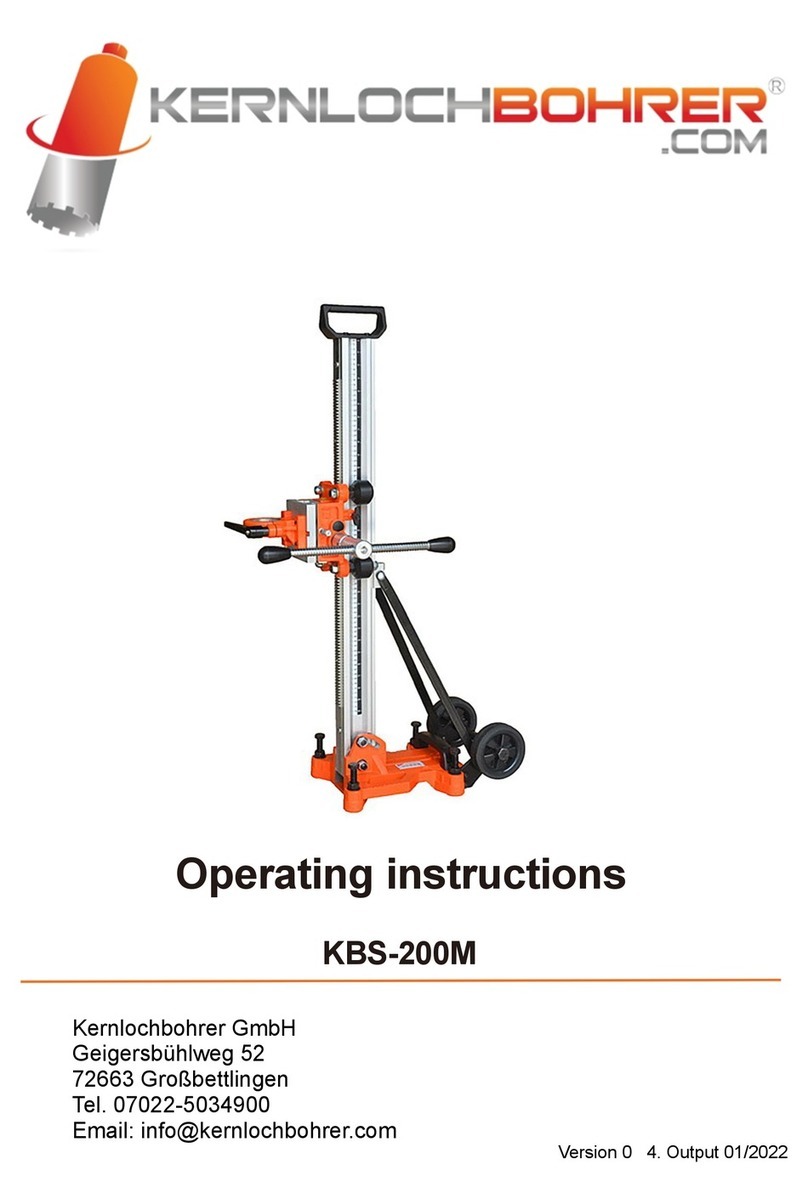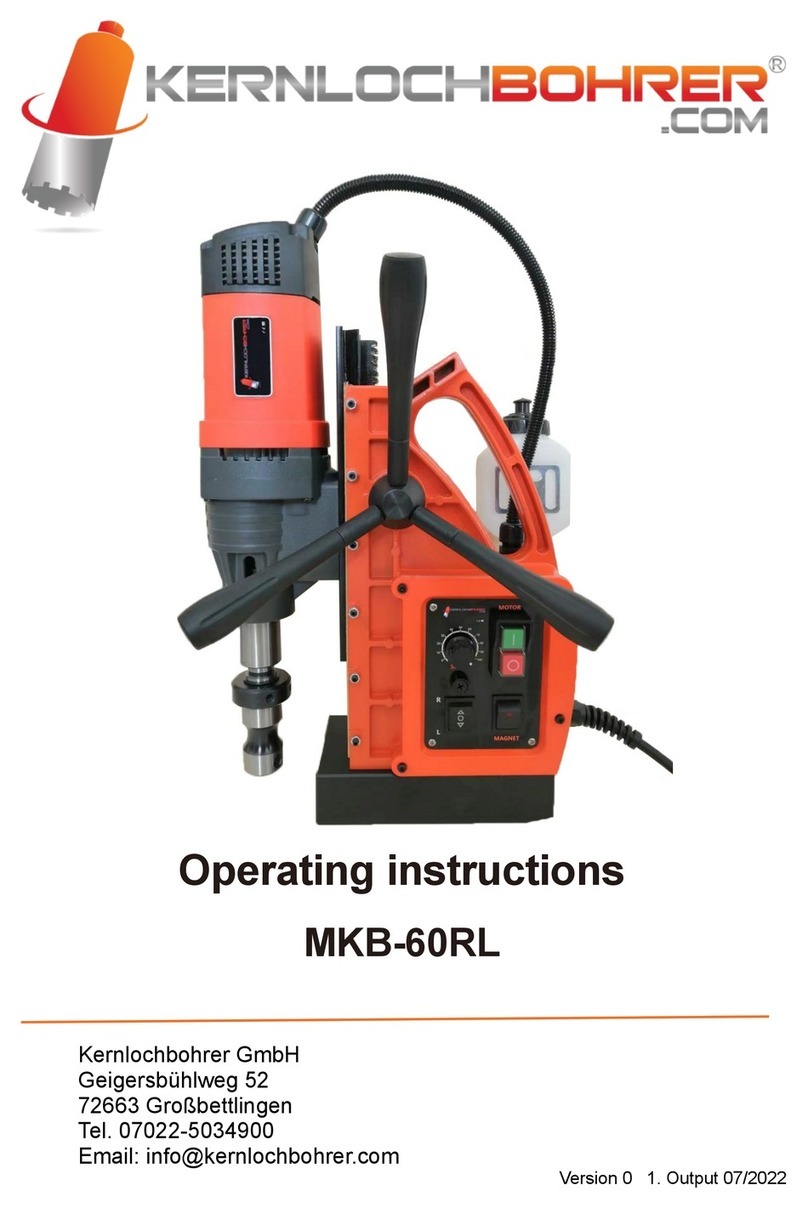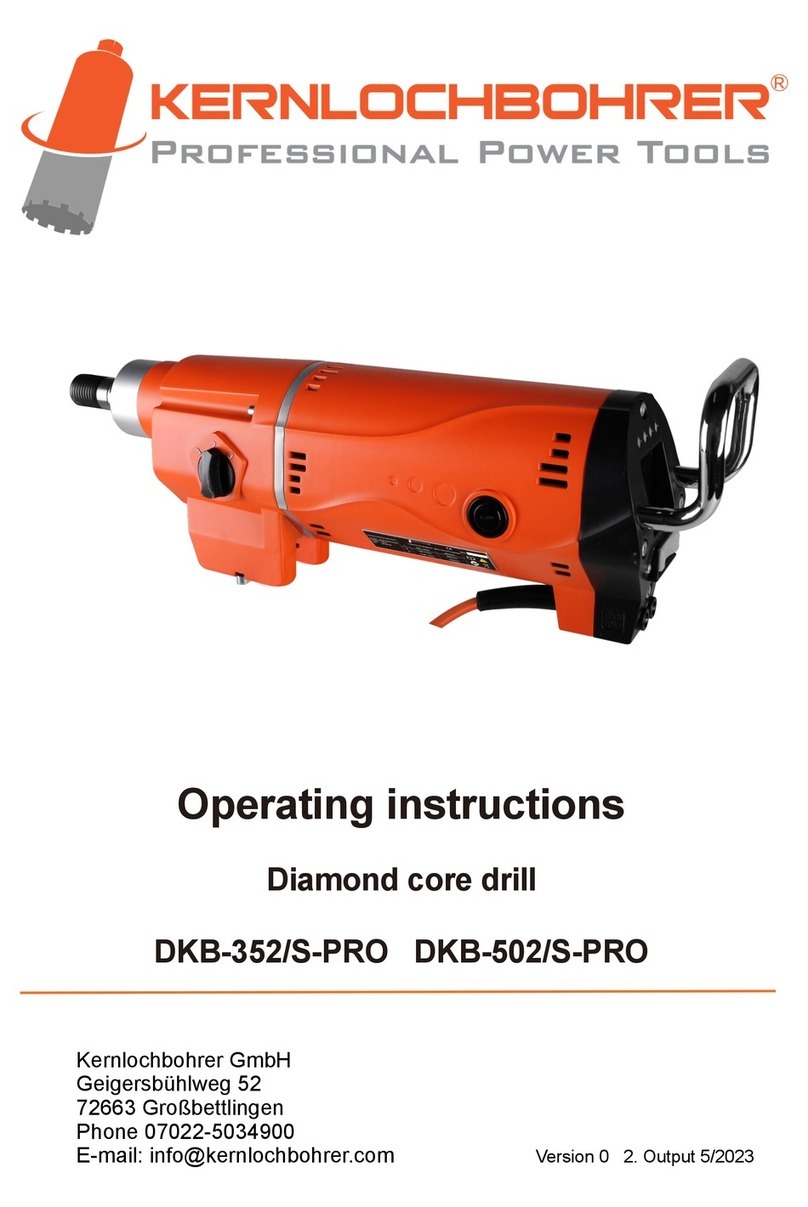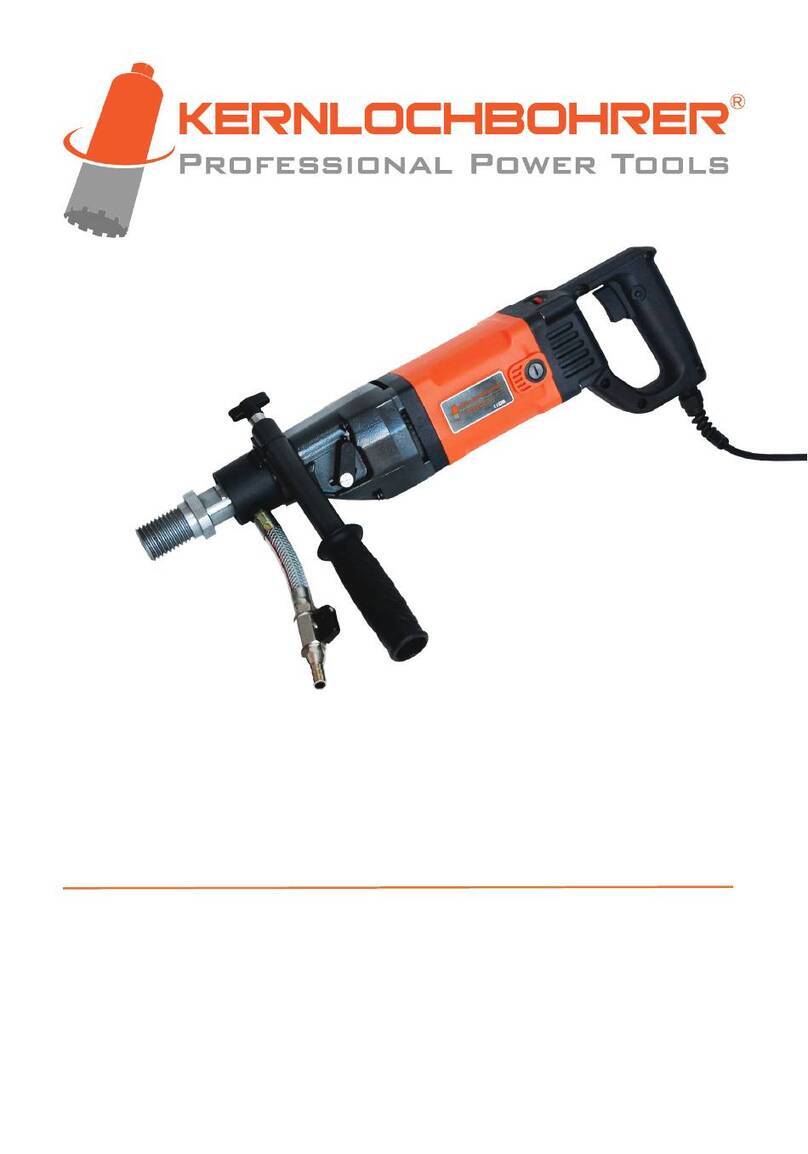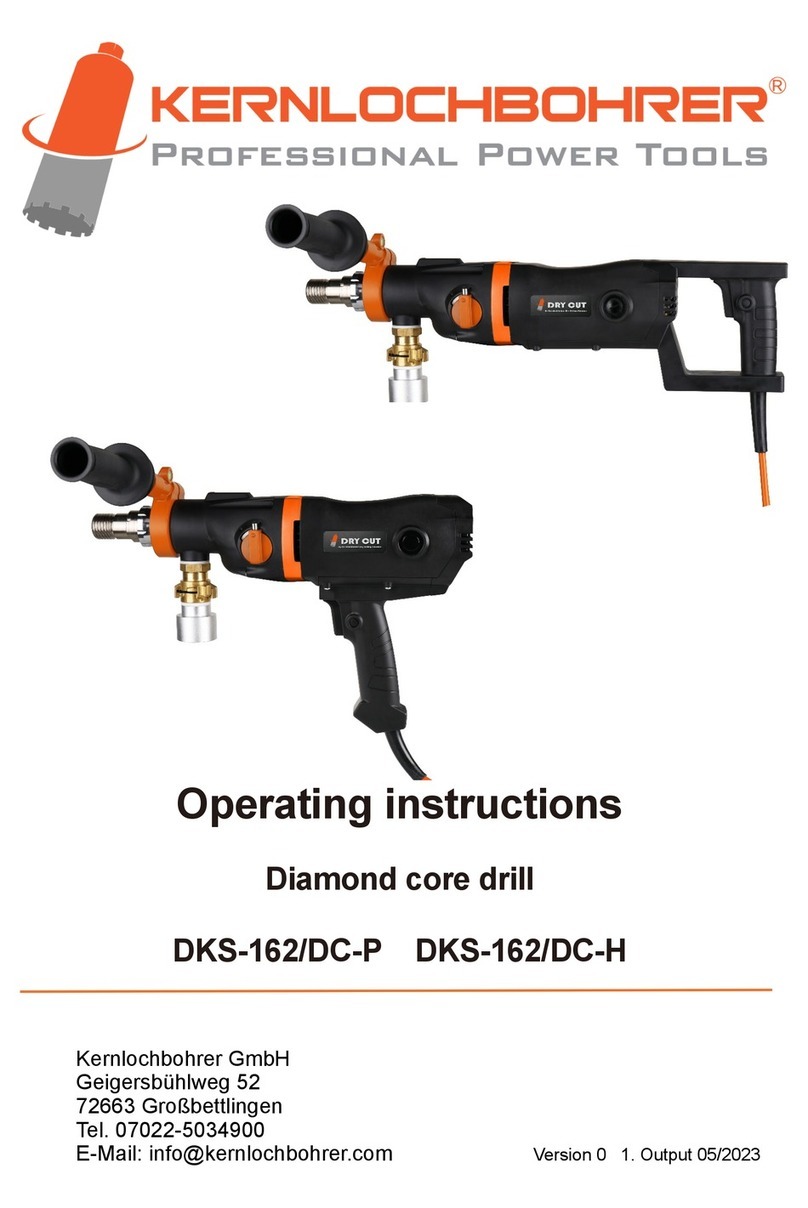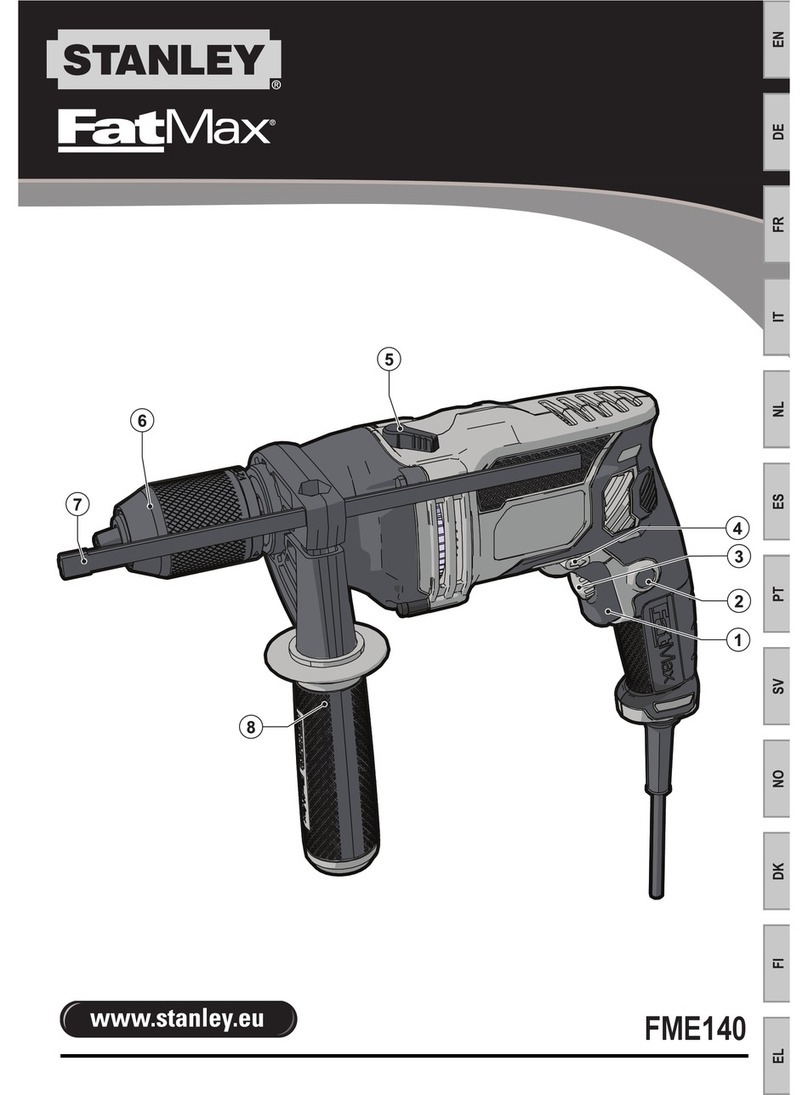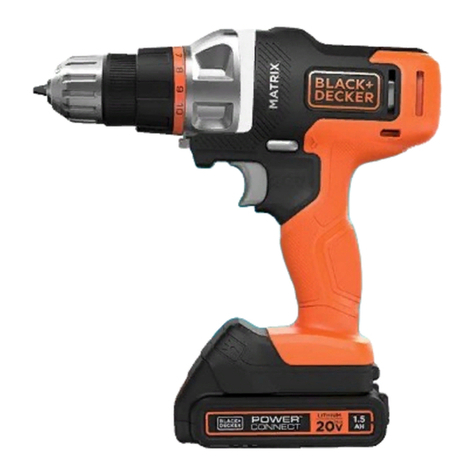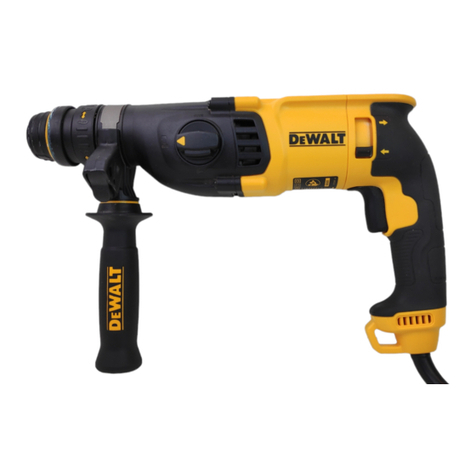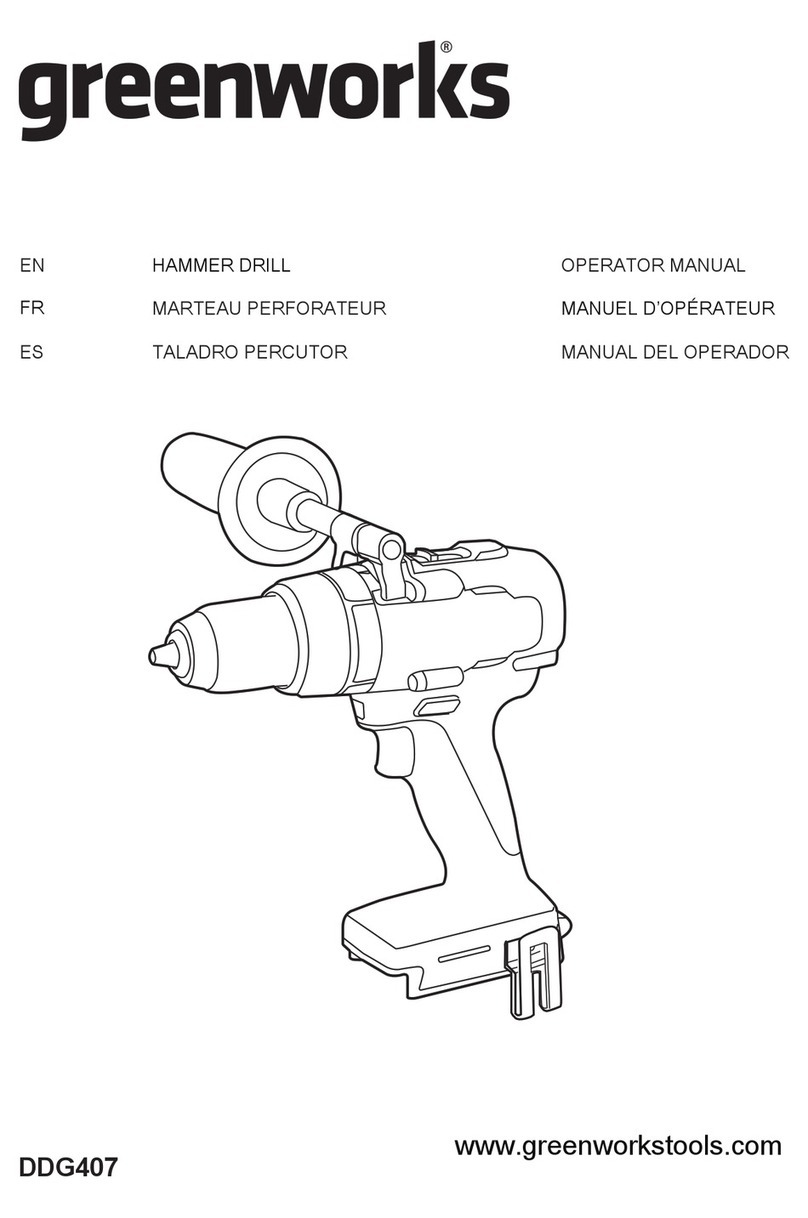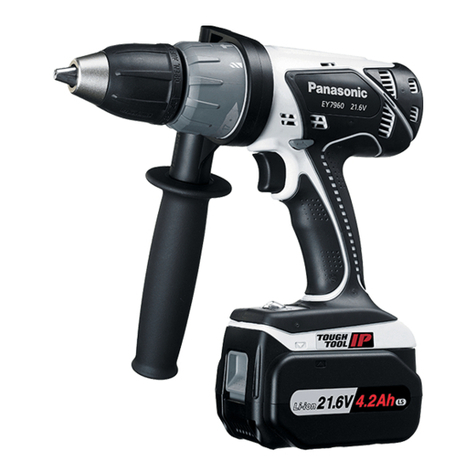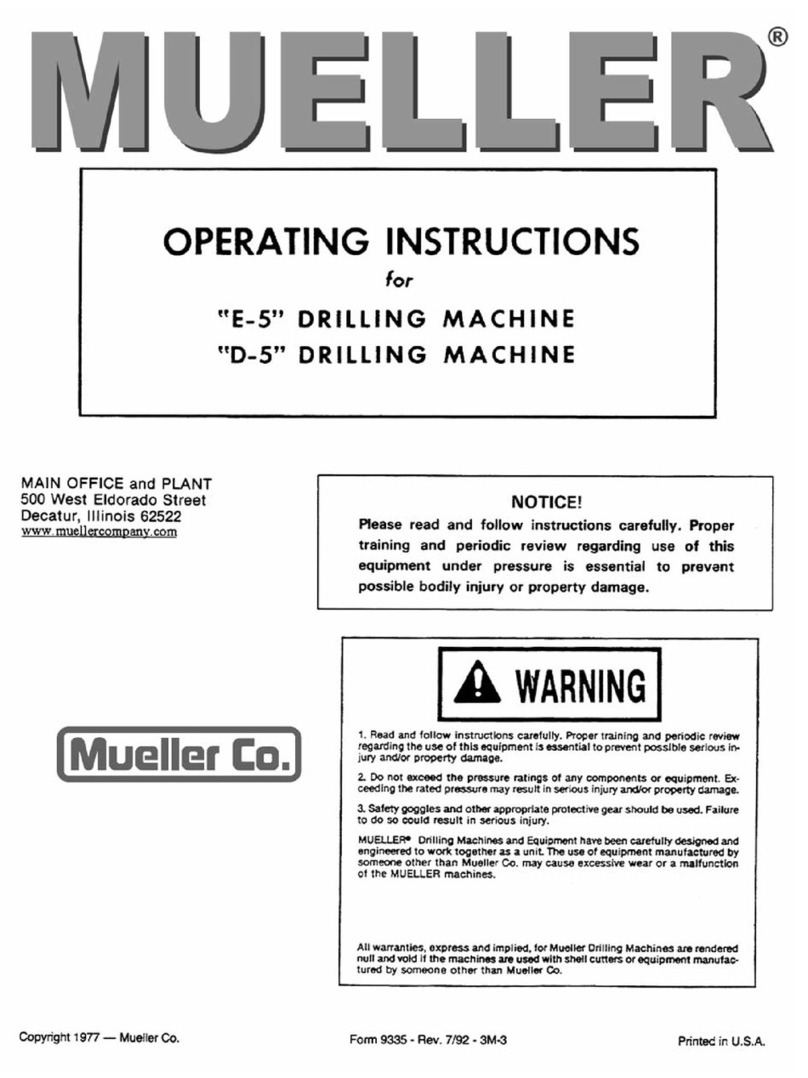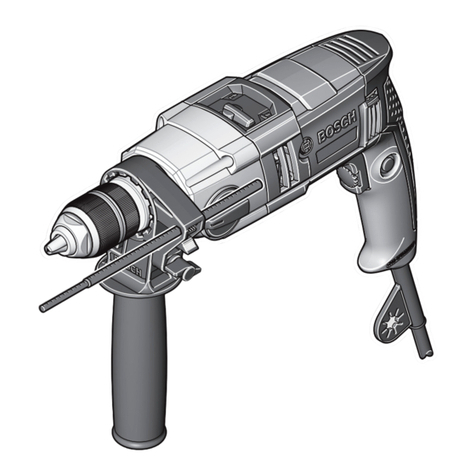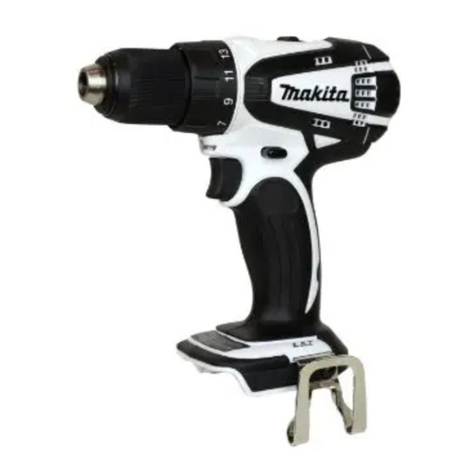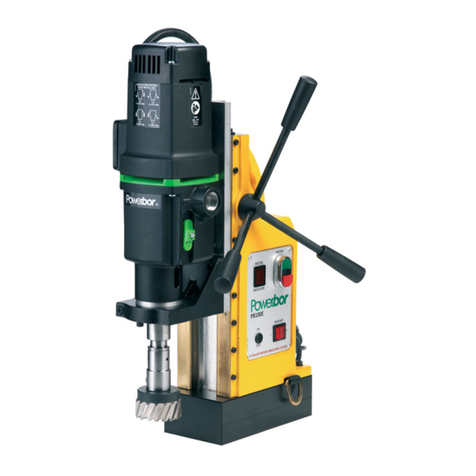9. Wear appropriate clothing. Do not wear loose clothing or jewelry. Keep hair,
clothing and gloves away from moving parts. Loose clothing, jewelry or long hair
can be caught by moving parts.
10. Do not overload the device. Use the appropriate power tool for your work. With
the appropriate power tool, you will work better and more gently in the specified
power range.
11. Do not use a power tool whose switch is damaged. A power tool that cannot be
switched on and off is dangerous and must be repaired.
12. Unplug the power tool from the wall outlet before making any adjustments,
replacing accessories, or setting aside the power tool. This safety measure
prevents the power tool from starting unintentionally.
13. Keep unused power tools out of reach of children. Do not allow persons to use
the device who are not familiar with it or have not read these instructions. Power
tools are dangerous when used by inexperienced persons.
14. Note that the voltage must not exceed +/-5% of the nominal voltage. Higher
voltages can cause irreparable damage. Note that higher voltage peaks are not
generated when operating the machine via a generator.
15. The plug of the power tool must match the socket. Do not change the plug
under any circumstances. Do not use adapter plugs with grounding-type forces.
Unmodified plugs and matching outlets reduce the risk of electric shock.
16. Avoid body contact with grounded surfaces or grounded components such as
pipes, radiators, ranges, and refrigerators.
17. Do not expose power tools to rain or wet conditions. Water entering a power
tool increases the risk of electric shock.
